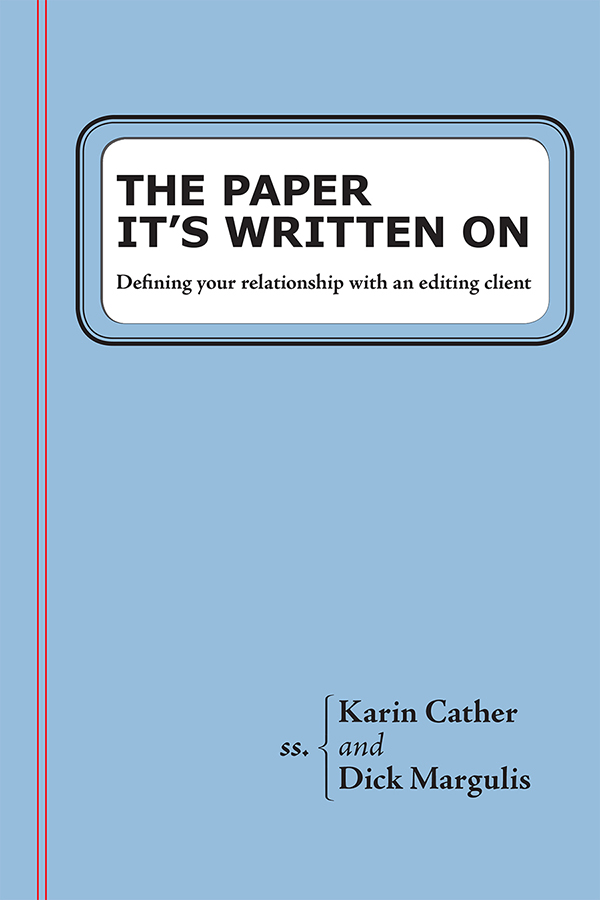
Into every freelancer’s life, a few contracts must fall. If words like “indemnify”, “non-disclosure”, and “non-compete” strike fear into your heart, Karen Cather and Dick Margulis have some other words for you. Read my review below — originally posted in my “How To” column at the now defunct Copyediting.com.
Into every freelancer’s life, a few contracts must fall. When a former-litigator-current-editor and a long-time publishing pro team up to write a guide specifically for the editor–client relationship, you know it’s going to be worthwhile.
It’s a slim, 80-page book, which reflects the ability of authors Karin Cather and Dick Margulis to explain jargon in clear, simple prose. Readers get an easy-to-understand explanation of why each part of a contract matters, where the problems lurk for editors specifically, and examples of how to word each element to the benefit of the editor.
Contract Problems that Affect Editors
The problems lurking for editors in contracts tend to be in the nature of opening editors to legal liability which—even if a court is unlikely to deem the editor responsible—would cost way more to defend in court than an editor earned from the job itself. Sometimes, their advice is to avoid problem clauses altogether and the authors explain how to strike clauses and negotiate their removal. “The more specific your contract,” Margulis and Cather advise, “the better your position.”
The two sample contracts offered in the book show specifically how to mitigate some of the problems in contracts and how to protect yourself as an editor from liability for words you don’t have final say over.
If words like “indemnify”, “non-disclosure”, and “non-compete” strike fear into your heart, this book will be a real balm.
The Paper It’s Written On is available online as a print book from &/Books.


